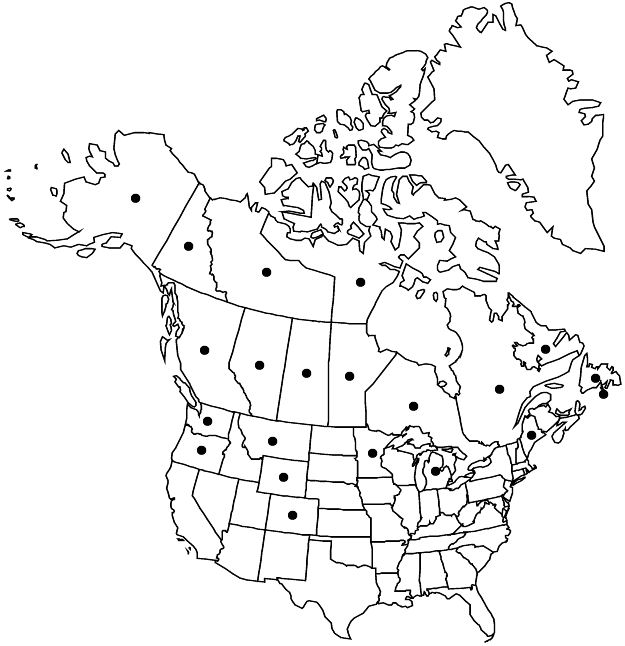Rubus arcticus subsp. acaulis
Biblioth. Bot. 17(Heft 72): 24. 1910.
Plants 0.5–2 dm. Stems glabrous or hairy. Leaves usually ternate; petiole glabrous or hairy; central leaflets ovate to obovate, to 6 cm (lateral leaflets shorter), base cuneate, margins dentate to serrate (often doubly), apex usually rounded. Inflorescences: flowers solitary. Pedicels stipitate-glandular. Flowers: sepals caudate, glabrous or hairy, eglandular or glandular; petals pink to rose, oblanceolate to obovate, 15–25 mm, apex slightly to strongly emarginate. 2n = 14, 21.
Phenology: Flowering May–Aug.
Habitat: Muskegs, boggy woods, fens, bogs, swamps, thickets, moist tundra
Elevation: 0–3000 m
Distribution

St. Pierre and Miquelon, Alta., B.C., Man., Nfld. and Labr., N.W.T., Nunavut, Ont., Que., Sask., Yukon, Alaska, Colo., Maine, Mich., Minn., Mont., Oreg., Wash., Wyo.
Discussion
Subspecies acaulis hybridizes with Rubus pubescens (R. ×paracaulis L. H. Bailey [= R. pubescens var. paracaulis (L. H. Bailey) B. Boivin]) in areas of sympatry.
Selected References
None.